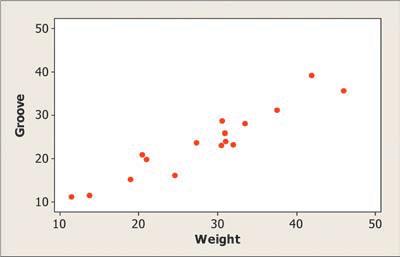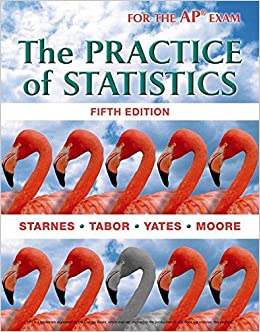Paired tires Exercise 71 in Chapter 8 (page 529) compared two methods for estimating tire wear. The
Question:
Paired tires Exercise 71 in Chapter 8 (page 529)
compared two methods for estimating tire wear. The first method used the amount of weight lost by a tire.
The second method used the amount of wear in the grooves of the tire. A random sample of 16 tires was obtained. Both methods were used to estimate the total distance traveled by each tire. The following scatterplot displays the two estimates (in thousands of miles) for each tire.12

Computer output from a least-squares regression analysis of these data is shown below. Assume that the conditions for regression inference are met.
Predictor Coef SE Coef T P Constant 1.351 2.105 0.64 0.531 Weight 0.79021 0.07104 11.12 0.000 S = 2.62078 R-Sq = 89.8% R-Sq(adj) = 89.1%
(a) Verify that the 99% confidence interval for the slope of the population regression line is (0.5787, 1.0017).
(b) Researchers want to test whether there is a difference in the two methods of estimating tire wear. Explain why the researchers might think that an appropriate pair of hypotheses for this test is H0 : b = 1 versus Ha : b ≠ 1.
(c) Compute the test statistic and P-value for the test in part (b). What conclusion would you draw at the a = 0.01 significance level?
(d) Does the confidence interval in part
(a) lead to the same conclusion as the test in part (c)? Explain.
Step by Step Answer:





